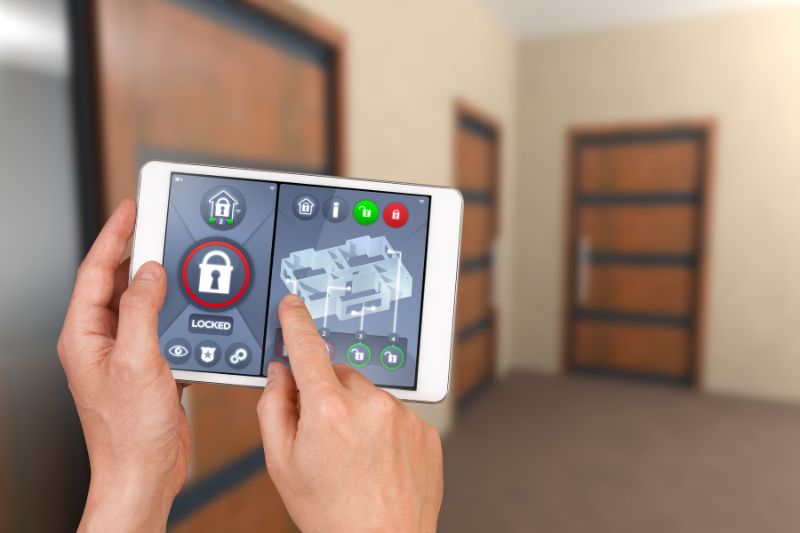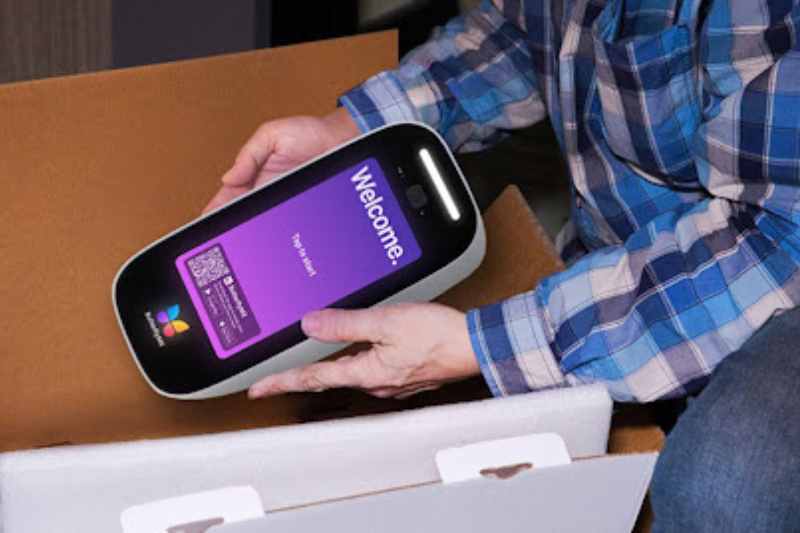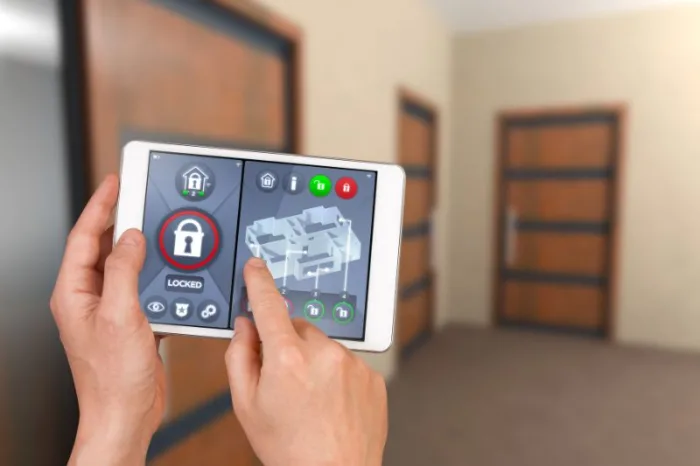Key takeaways
- Smart property management is the use of technology to make day-to-day management easier.
- Benefits of smart property management include enhancing the tenant experience and saving money on maintenance.
- Key smart property technologies include cloud computing, the Internet of Things, and smart access control.

Property management is evolving rapidly thanks to the introduction of modern technology. Smart property management is improving how properties are managed, enhancing efficiency, reducing costs, and elevating tenant satisfaction.
In this comprehensive guide, we explore the essence of smart property management, its benefits, key technologies involved, and practical steps to implement these innovations effectively. Most importantly, we’ll list the three best smart property management software solutions to use.
This post covers:
- What is smart property management?
- Benefits of smart property management
- Key technologies in smart property management
- Implementing smart property management
- Future smart property management trends
- 3 best smart property management solutions
What is smart property management?
Smart property management uses cutting-edge technologies to automate and streamline various aspects of property operations.
For instance, these technologies leverage data-driven insights and connectivity to optimize building performance, enhance tenant experiences, and enable proactive management practices. As a result, you’re able to operate a more efficient and safer property for employees and tenants.
From residential complexes to commercial spaces, smart property management solutions are reshaping the industry by offering real-time monitoring, predictive analytics, and remote management capabilities.
Watch how ButterflyMX works:
Benefits of smart property management
Implementing smart property management solutions yields numerous benefits for property owners, managers, and tenants alike.
Smart management unlocks benefits like:
- Operational efficiency. Automation of routine tasks such as maintenance scheduling, energy management, and security monitoring reduces manual workload and operational costs.
- Cost savings. Optimized energy usage, predictive maintenance, and efficient resource allocation contribute to significant cost savings over time.
- Enhanced tenant experience. Integrated smart technologies improve convenience, security, and comfort for tenants, boosting satisfaction and retention rates.
- Real-time insights. Data analytics provide valuable insights into property performance, enabling informed decision-making and proactive maintenance.
Key technologies in smart property management
Smart property management relies on a suite of advanced technologies that work together to transform traditional property operations.
Some smart property tech you can choose from include:
1. Internet of Things (IoT)
IoT property management depends on sensors that collect real-time data on building systems.
You can use IoT to manage HVAC, lighting, and occupancy, facilitating remote monitoring and increased efficiency.
2. Cloud computing
Cloud-based platforms store and process large volumes of data from IoT devices, enabling scalable and secure management solutions accessible from anywhere.
With a cloud-based system, you can make changes and edit permissions from any device — whether you’re on- or off-site.
3. Data analytics
Property management systems in your front office, like data analytics software, can help you keep existing residents happy while attracting new ones.
Advanced analytics tools transform raw data into actionable insights, guiding strategic decisions and enhancing operational efficiency.

4. Smart building systems
Integrated smart property systems manage building functions such as access control, lighting, and HVAC through centralized platforms.
This way, all of the systems in your building can work together to promote seamless operations and energy conservation.
5. Smart access control
One of the most convenient smart building systems that you can invest in is smart access control.
The best smart access systems come with features like audit trails of door releases and mobile, swipe-to-open apps — increasing security and convenience alike.
Implementing smart property management
Now that you’re familiar with some of the best smart technology in property management, here’s how you can start using it in your own building.
To adopt smart property management effectively, follow this step-by-step guide:
- Assess property needs
- Select appropriate technologies
- Install devices and sensors
- Integrate smart systems
- Educate staff and tenants
- Monitor and optimize
1. Assess property needs
First, you can identify areas where smart technologies can address inefficiencies or enhance tenant experiences.
Every property is unique, and only you can decide whether a keypad or a card reader is the best way to secure a particular doorway.
2. Select appropriate technologies
Choose technologies that align with your property’s goals and budget constraints. Consider scalability, compatibility with existing infrastructure, and potential for future upgrades.
3. Install devices and sensors
Install IoT sensors and devices strategically throughout the property to monitor critical parameters such as energy usage, air quality, and occupancy levels.
While you can always install these sensors yourself, you can also depend on the expertise of a veteran installer to ensure that you can start using smart technology without a hitch.

4. Integrate smart systems
While smart technology can benefit your property, you might run into some trouble in terms of managing all of your smart platforms. Each smart lock and keypad you install might come with its own software management platform, turning management into a chore. But luckily, there’s something you can do to simplify management.
Integrators and installers can work with your technology and combine every software platform so that you only need to use one dashboard to manage your entire property. They can also integrate AI-driven analytics platforms and IoT hubs to create a cohesive ecosystem for data-driven decision-making.
5. Educate staff and tenants
After you’ve installed your new smart technology, you should provide training to property management staff on using new technologies effectively.
Educate tenants on the benefits of smart amenities and how to utilize them for enhanced living or working experiences. For example, tenants can use smart management tenant portals to make amenity reservations or pay their rent online.
6. Monitor and optimize
Once your system is all setup, you can still keep an eye out for things to improve.
Monitor system performance and tenant feedback to identify pain points and opportunities for optimization. Use data analytics to maximize smart tech’s efficiency on your property.
Future smart property management trends
Looking ahead, several trends are shaping the future of smart property management.
Some upcoming smart property services include:
- Blockchain for property transactions. Secure and transparent transactions using blockchain technology to streamline lease agreements, payments, and property records.
- Augmented reality (AR). AR applications for remote troubleshooting and maintenance guidance, reducing downtime and enhancing service efficiency.
- Smart city integration. Collaboration with smart city initiatives to optimize urban infrastructure, enhance sustainability, and improve community resilience.
- Enhanced cybersecurity measures. Advances in cybersecurity and IT will further protect IoT devices and sensitive property data from threats and breaches.

3 best smart property management solutions
If you’re in the market for a smart property management platform, here are a few options to get you started on your research.
The three best smart property management solutions are:
1. Yardi
Founded in 1984, Yardi has stood the test of time and serves property managers across the country.
Yardi’s features include:
- Data analytics. With Yardi’s help, you can get a comprehensive picture of electricity usage across all your properties. View valuable metrics like utility usage and consumption across certain times to see where you can cut costs and make things more efficient.
- Stakeholder service portals. Whether you’re dealing with your residents or your investors, Yardi can make communication easier. Count on Yardi to streamline your accounting and financial recordkeeping, and use Yardi to screen tenants or allow them to pay their rent online.
- Multiple products tailored to your needs. Choose the best fit from your property among offerings like Yardi Voyager, Breeze, and Pulse. Voyager is Yardi’s powerful, general-purpose software offering, while Breeze is a simpler version for smaller properties. Pulse, on the other hand, is marketed towards commercial properties.
2. RealPage
You can depend on RealPage to help you manage your property with these exciting features.
RealPage’s features include:
- Vacancy management. With RealPage, you can keep track of vacant units and get a better understanding of the marketing tactics you’ll need to adopt to fill them.
- Accounting features. RealPage also integrates with OneSite Leasing & Rents to deliver a more comprehensive accounting experience.
- Simplifying renter’s insurance. RealPage also works with eRenterPlan to offer industry-leading renter’s insurance, increasing peace of mind for both you and your residents.
3. Entrata
Count on Entrata to help you keep your property running smoothly.
Entrata’s features include:
- Facility management tools. Entrata’s facility management tools let you easily manage work orders and resident complaints. With their help, you can reduce the amount of time it takes for residents to get their concerns addressed and increase tenant satisfaction.
- Digital marketing services. In addition to property management, Entrata can help you out with another important task – attracting potential residents. Use Entrata to streamline communications, store a database of marketing contacts, and more.
- Help with onboarding. To ensure that your staff get their money’s worth out of Entrata, Entrata has provided courses and webinars to help your staff fully acclimate. You can even request in-person teachers who can come right to your property.







